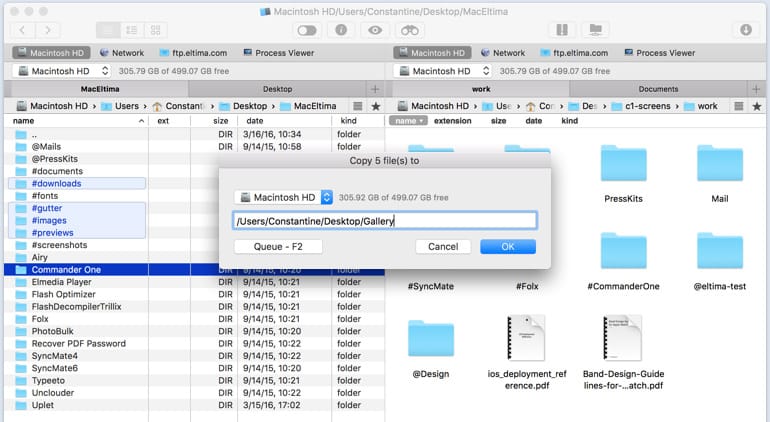
- #OPEN TERMINAL IN FOLDER MAC HOW TO#
- #OPEN TERMINAL IN FOLDER MAC MAC OS X#
- #OPEN TERMINAL IN FOLDER MAC MAC#
You can use the up arrow key to repeat a command.If you mistake the code, you may receive an error message, or the command will run in the wrong way. Commands won't execute until you press the return key.A command consists of three parts: the command name, a modifier to the command's output, and where the command will operate. Once you open Terminal, you will see a small window with the title listing the name of the current directory, the type of the shell, and the window's size in pixels. Upon the macOS recovery window, you can pull down the Utilities menu and click on Terminal to open the Terminal app.
#OPEN TERMINAL IN FOLDER MAC MAC#
To launch Terminal on an Intel-based Mac, you need to boot your Mac into macOS Recovery mode by holding down Command + R keys until you see the startup screen at restarting.įor M1 Macs, you need to shut down the computer first and press the power button until you see "Loading startup options", then click Option > Continue.
#OPEN TERMINAL IN FOLDER MAC HOW TO#
How to open Terminal from macOS Recovery mode? If you prefer to open Terminal on Mac with a keyboard only, you need to create a shortcut. If you plan to use Terminal often, you can pin it on the Dock by right-clicking on the Terminal icon and choosing "Keep in Dock" from the Options menu. You can also find it in the Utilities folder under Applications in Finder. Then you can type in "Terminal" and double-click the appeared Terminal. Click on the small magnifying glass icon at the top-right corner of your Mac or press Command + Space keys at the same time to launch Spotlight. The easiest way to open Terminal is from Spotlight search. Otherwise, you can access it from the macOS Recovery mode. If your Mac works well, you can launch Terminal from Desktop through Spotlight or Finder. The Terminal app provides a command-line interface on Mac computers to allow you to control the operating system quickly and efficiently to perform tasks a graphical user interface is unable or requires more effort to deliver. Generally speaking, people use two interfaces to communicate with computers: GUI (graphic user interface) and CLI (command-line interface). Let's start with some basics to help you dig deeper and work with complicated tasks in the future. It has the advantages of being more efficient with tasks, troubleshooting issues, and repairing disks through SSH or Mac Single User Mode when you lost access to the user account. It's actually quite useful for people who are used to command lines. rm ~/Library/Preferences/ are all familiar with the GUI that we use daily to interact with our Macs, but not so much with the Mac command-line interface - Terminal.At the Terminal prompt, type the following command exactly as written.Delete the primary Finder preferences file:.Oopen Terminal, located in the Applications > Utilities folder.If you cannot launch Finder, you can delete its preferences using Terminal. Relaunch the Finder by choosing Force Quit from the Apple menu, selecting Finder, then clicking the Relaunch button.

#OPEN TERMINAL IN FOLDER MAC MAC OS X#

These instructions are a subset of the comprehensive Finder troubleshooting information in our book Troubleshooting Mac® OS X.

: the Finder Sidebar preferences for those using Mac OS X 10.3 Panther or later.This FAQ provides several methods for deleting the Finder preferences files: Finder issues? How to delete its preferencesĬorrupted Finder® preferences may cause a variety of problems, including the Finder crashing or quitting unexpectedly.


 0 kommentar(er)
0 kommentar(er)
